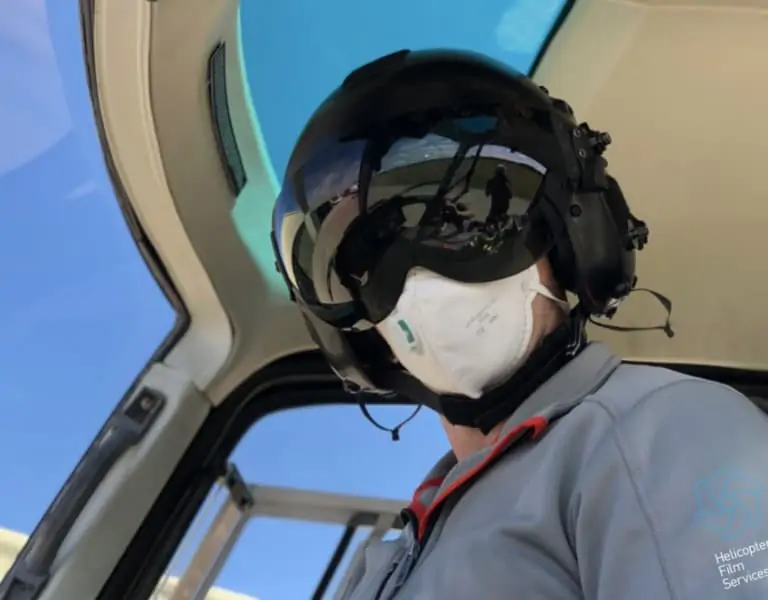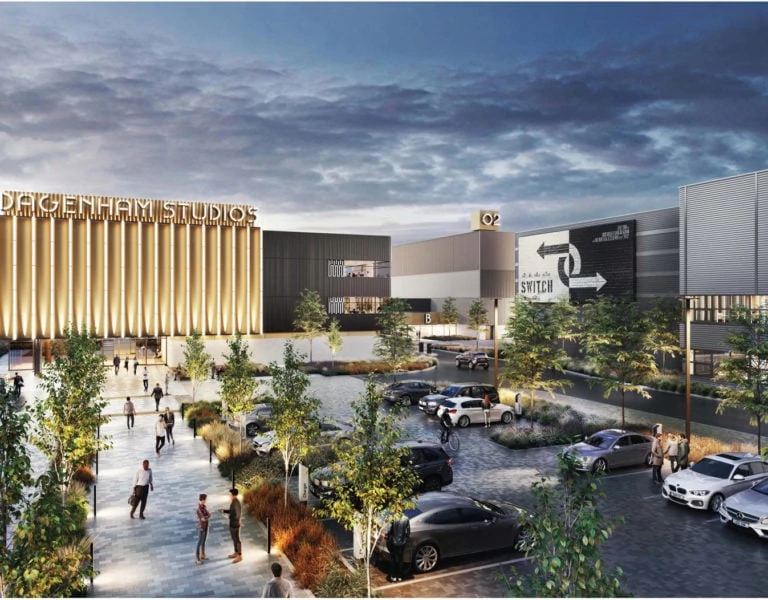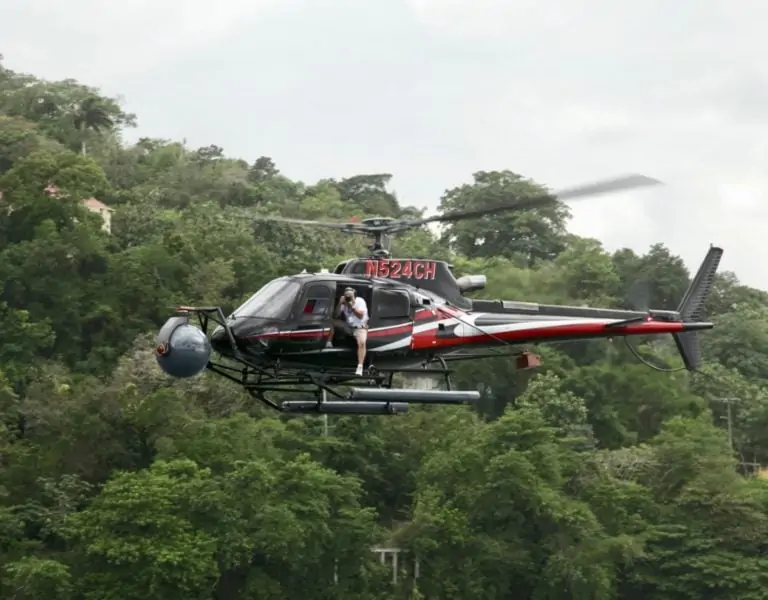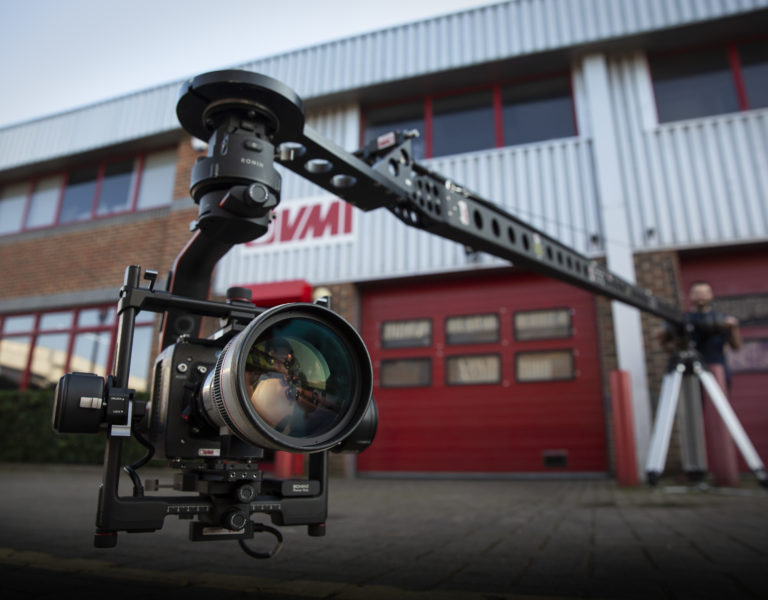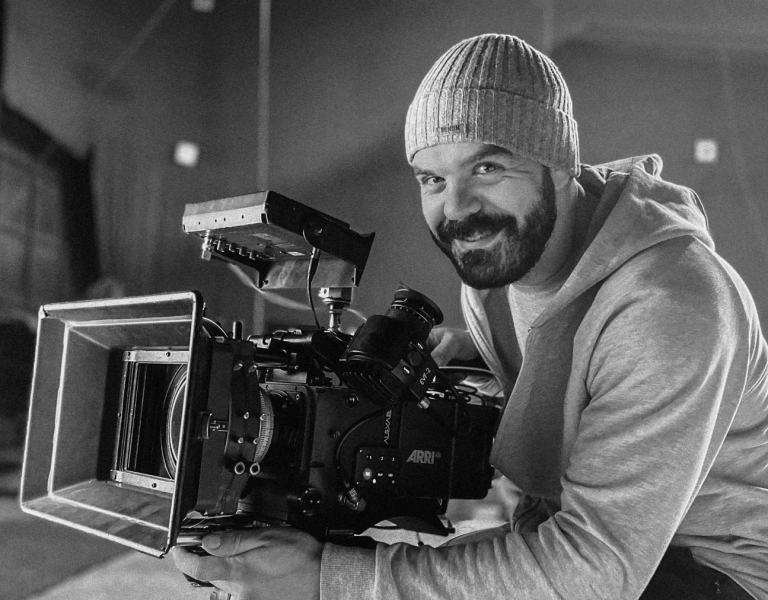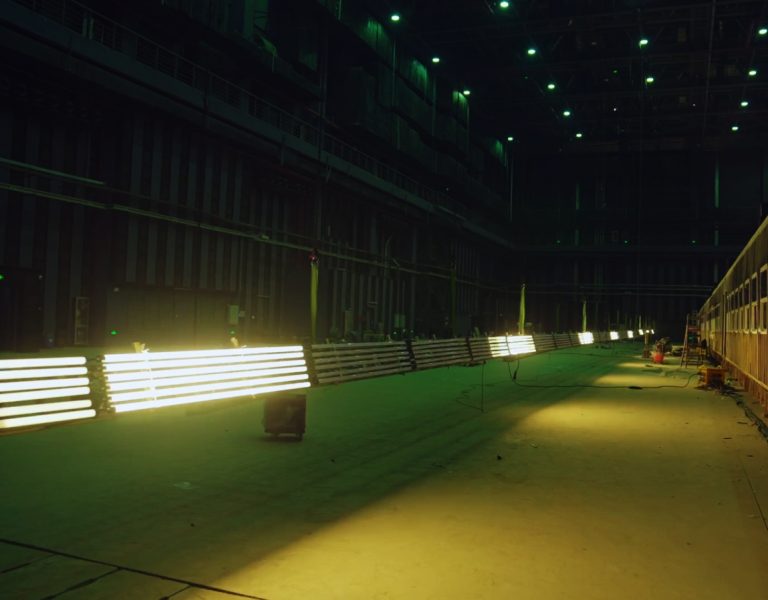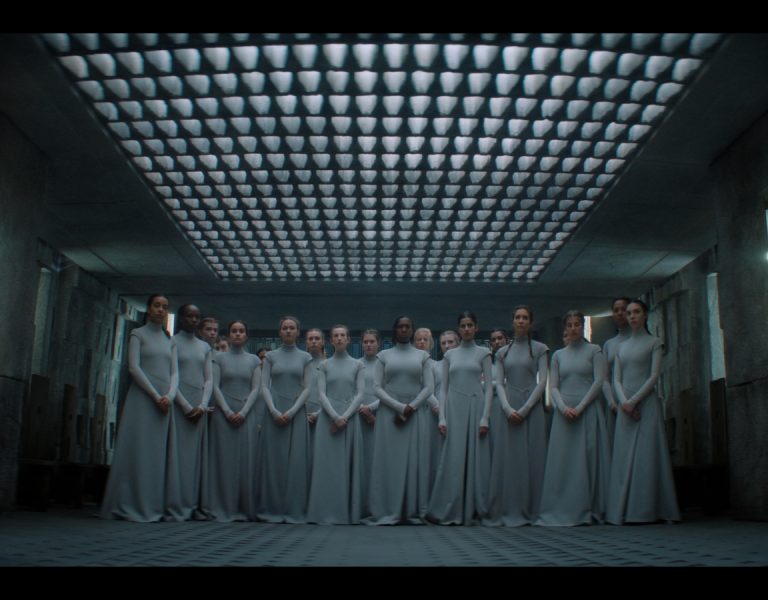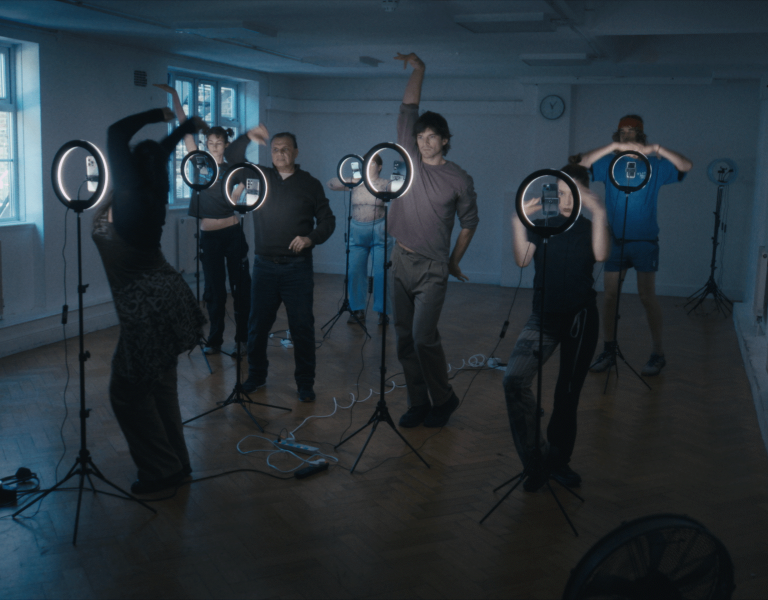SHOTS THAT SOAR
The movie business is a demanding beast, expecting blockbuster films to offer visuals that are bigger, faster, and more spectacular than both the competition and what went before. Which is where aerial sequences come in.
The technology is certainly there to create standout aerial sequences. The camera mounts, gimbals, and stabilisation systems for attaching smaller and lighter cameras to helicopters and drones have developed exponentially in the last three years. Drone technology itself has gone through a similarly rapid evolution, with the appearance of hybrid FPV (first person view) models that allow them to be controlled in a way that simulates how an aircraft is flown.
All of this is now being used to deliver the kind of shots that action directors and cinematographers are looking for, which Christopher McQuarrie, director of Mission: Impossible – Dead Reckoning Part One, describes as having “Energy, immersion, emotion.” McQuarrie explains that the aim should be to find different ways to use aerial technology and produce new, exciting images – but not ones that are spectacular for its own sake. “Spectacle – and awe – are not the goal,” he says. “They are a by-product in pursuit of the goal, which should be to produce the most immersive possible experience in an environment grounded as close to reality as possible. We are constantly striving to find new ways to put the audience inside the sequence with the protagonist.”
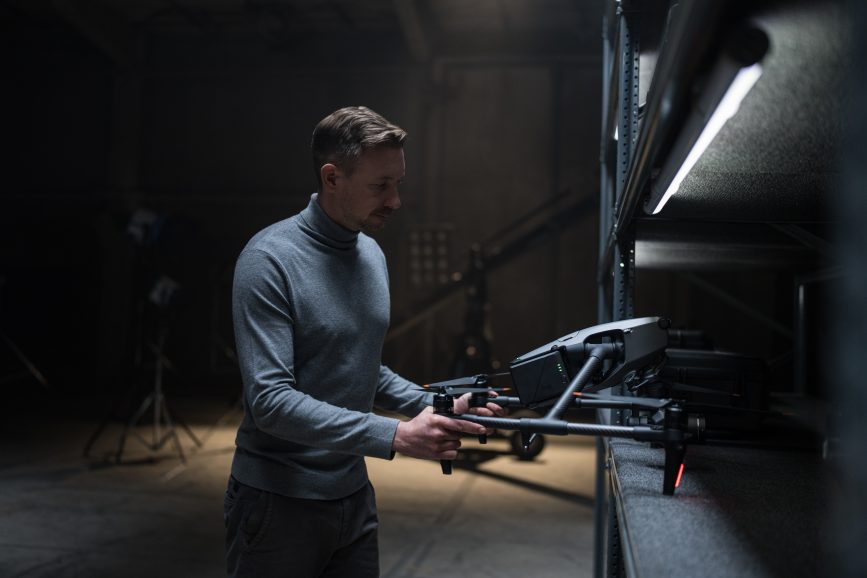
Aircraft and shooting equipment for many airborne sections of MI: Dead Reckoning were provided by the Aerial Film Company. The director of photography for these, Phil Arntz, says that these called for “a lot of complex and challenging flying”, made possible by the latest gear. “McQuarrie wanted dynamic movement, high-speed flying and extreme proximity in the air,” he comments. “This pushed us to develop more suitable options for the production: lighter systems allowing greater helicopter flight performance and bold lens choices giving audiences a new perspective on the action.”
Jeremy Braben Assoc. BSC, aerial DP and founder/managing director of Helicopter Film Services, observes that cameras are “developing at a steady pace”, with new models based on better sensors appearing from RED, ARRI and Sony. “There’s always the desire to use these on or in aerial platforms and most of the stabilised gimbals like the Shotover and Freefly MōVI can accommodate most of these new cameras, albeit with a limited lens choice with little or no modification. New smaller gimbals and cameras have also seen an increase in the use of hybrid FPV.”
Among the most successful developers of drones is DJI, which officially launched its much-anticipated new model, the Inspire 3, in May. It is a FPV drone that features a full frame 8K ProRes/CinemaDNG (compressed RAW) camera, new lenses, positioning antennas and a storage card slot. “Over the years there’s been huge developments in aerial drone technology,” observes Ferdinand Wolf, pilot and creative director with DJI Europe. “Advances in obstacle detection sensors, battery life and payload capability have all contributed to making that dramatic shot safer and easier to achieve.”
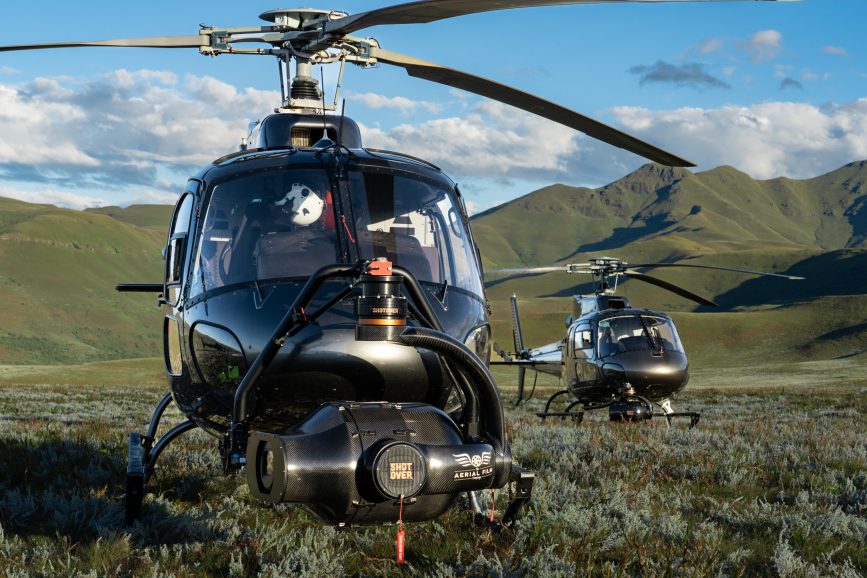
As might be expected, Wolf views drones as offering a lower cost alternative to helicopters while still being able to shoot aerial material in 4K without the need for a Hollywood budget. “The drone has become the absolute standard and must-have in any cinematographer’s toolkit,” he says. “Traditionally, directors were asking for a typical wide aerial establishing or top-down bird’s eye shot but now that’s not enough and advances in drone technology have meant they’re pushing for more. They see the drone as the linking piece between ground cameras and aerial shots. You basically have a camera that can be positioned anywhere in a 3D space. It can not only replace dolly and crane movements, but it goes even further with way more flexibility and cost efficiency.”
The new breed of smaller, FPV drones, which, to complicate matters, are also known as hybrid, racing, or speed drones, are now being used increasingly on high-end productions, although Wolf acknowledges they are still a relatively new area. “People are still experimenting to produce shots you wouldn’t even have thought possible,” he says. “There’s been some incredible examples, such as following the path of a bowling ball all the way into the pins or flying through presses at the Tesla Gigafactory in Berlin.”
The Tesla fly-through was shot by German aerial services operation Skynamic using a small FPV drone. The company has a broad portfolio of drones in its portfolio, which includes the Inspire 3 but also the Freefly Alta 8 octocopter, Cine FPV systems and the PORTER heavy lifter. Skynamic chief executive and drone camera operator Julian Glöckner comments that “directors and DPs are more aware of what drones can do nowadays and what kind of motion is possible to service a specific part of the story.” He adds that this increased awareness has driven demand for drones and other aerial tools.
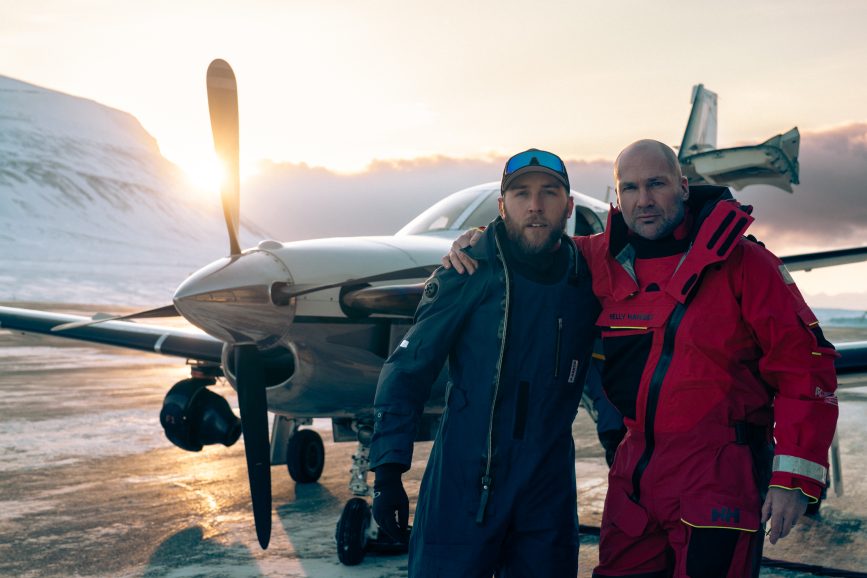
“The drones in general close the gap between ground work and helicopters, which cannot fly as low and close as we can and do,” Glöckner says. “Directors and DPs are now looking for more complex flight routes because they know the capabilities [of the drones]. The drone is accepted as a film tool and not a niche product for special purposes. Every year the technology evolves and new tools come on the market. We used the DJI Ronin 2 gimbal on the heavy lifter a lot, which was a game changer. The Inspire 3 is that now because of its 8K full frame camera. We now have the quality of a heavy lifter in a small drone that is faster and more agile than big octocopters. One DP told us that he likes the smaller drones because the pilots are more daring with them, which is true.”
Will Glover, managing director of the Specialist Filming group, reports “a really big shift” towards using drones for first person view shots and hybrid models in particular. “These systems can go where you can’t get a standard heavy lift drone, which means you can get shots you wouldn’t have been able to get before,” he comments. “Normally, on an FVP drone, the camera is fixed on the top, looking at wherever it’s flying. Hybrid FPV drones have a gimbal camera, so it’s essentially a cross between the heavy lift systems, whereby you can frame a shot as you like but not necessarily fly it where you like, whereas with FVP drones you can frame the shot as you want and probably fly it wherever you like as well.”
The Specialist Filming group comprises three companies: Fleye, which flies drones for commercials and branded content production; Flying Pictures offers both drones and helicopters for TV drama and film work; and Amis Production provides helicopters aimed at live TV. Regarding the demarcation between helicopters and drones, Glover says the former are a “much more specific and considered” choice, while the latter are now being specified even if the production is not sure what it wants to do with them. “They’re figuring it out on the day and much like having a dolly in a grip truck, people are requesting a drone on set so they can get a different perspective or shot. You don’t get that with helicopters because the cost is prohibitive but when people do book one, they know exactly what they want to get out of it.”
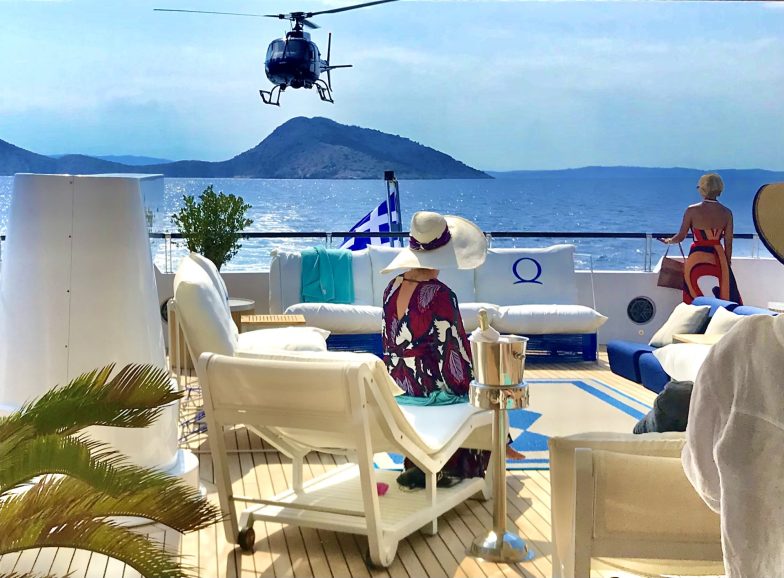
Issy Wells, operations coordinator at Flying Pictures, agrees that drones are “definitely more requested for aerial filming” these days, while helicopters are seen as “the old boys”. There is still a demand for them, she says, but the reason for their use is very particular. “A lot of productions are more drones than helicopters today. The rigs can now carry such good cameras that DPs and directors are becoming more interested in the drone side. Demand for aerial shooting in general has definitely increased and there was a big spike this year after everyone was getting kick-started again in 2022 after COVID.”
Many aerial film services providers are now not only offering both helicopters and drones but also working with specialist developers to produce new and more specific hardware for film and TV production. “We design, build and provide a whole range of different solutions for aerial filming,” explains Dani Rose, company director and chief pilot of CineAero. “This ranges from hybrid FPV drones specifically for film usage, developed with KnightSky Aerials, to bespoke manned and un-manned single camera lightweight multi-camera arrays, which were developed over an 18-month period for the upcoming Mission Impossible film. On the helicopter side, the new Shotover systems help us deploy lighter camera bodies, meaning we can fly heavier and more exotic lenses like the Angénieux Optimo 12x full frame or have an array in a lighter configuration, which keeps gimbal performance up.”
In addition to the equipment used for aerial shoots changing significantly over the last few years, those working in the field have also noticed that how they discuss what directors and DPs want, particularly when it comes to drones, has also changed. “All these new developments started a different conversation around drones and what a drone shot could be,” says Katya Nelhams-Wright, founder of The Helicopter Girls. “Over the last few years that has really been embraced by the creative teams we work with. The language of drones has evolved and become more sophisticated and technically accomplished. Today we can offer so much more than just a high wide. We’re now able to fly longer lenses as well. The 20mm used to be a mainstay for us but that’s a thing of the past. Now we mainly fly between 35mm and 75mm but have flown lengths of up to 135mm.”
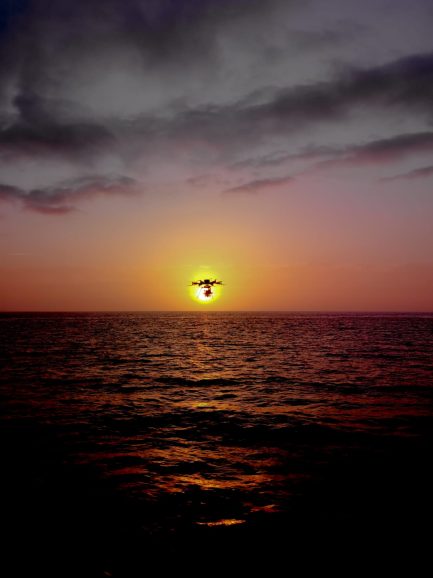
Ever since drones moved over into filmmaking, the “will they kill off helicopters?” debate has been raging. The general conclusion is that, while drones will take over more of the work, there will always be a place and a need for the whirlybirds. If anything, drones are as much a threat to dollies and cranes as they are to choppers. “As the development of ‘cinema’ drones has advanced, many of the shots I am now asked to undertake on set are little more than extended three-dimensional crane or dolly shots,” comments aerial DP and director of Marzano Films John Marzano Assoc. BSC GBCT. “Take, for example, a long slow track in from 100-feet altitude descending to head height and picking up a cast member walking or running across a set on the back lot of a studio. Traditionally, this would have been either impossible or extraordinarily complex and time consuming to set up.”
Marzano also sees the introduction of hybrid FVP drones as a “significant advancement” over recent months but does not see the drone in general taking over from helicopters: “The helicopter can provide a dimension to the creative workflow and operate in ways that drones cannot. But the same can equally be said of drones, which can achieve shots on set that a helicopter would prove too disruptive or destructive for. In short, drones and helicopters provide different options to the creative flow and with only a very small crossover between the two applications.”
The drones versus helicopters argument will doubtless rumble on but what is not in doubt is that both aircraft will only increase in demand to capture the cinematic aerial sequences that show no sign of going away.
